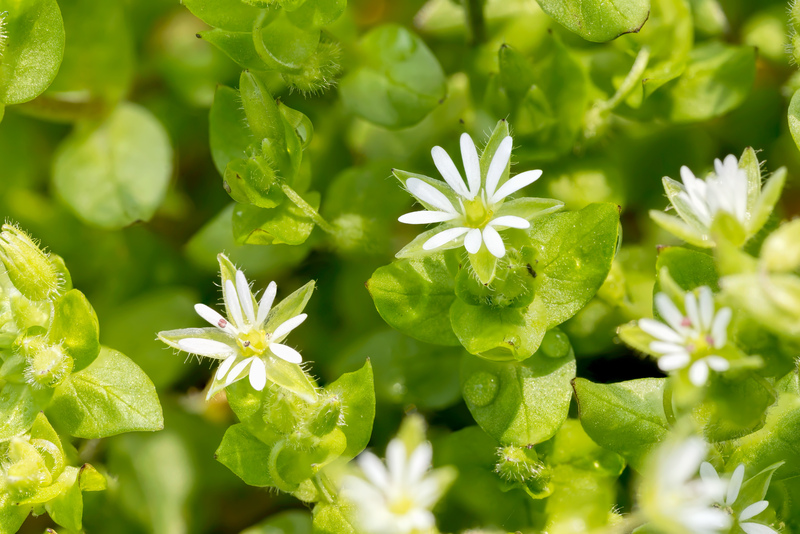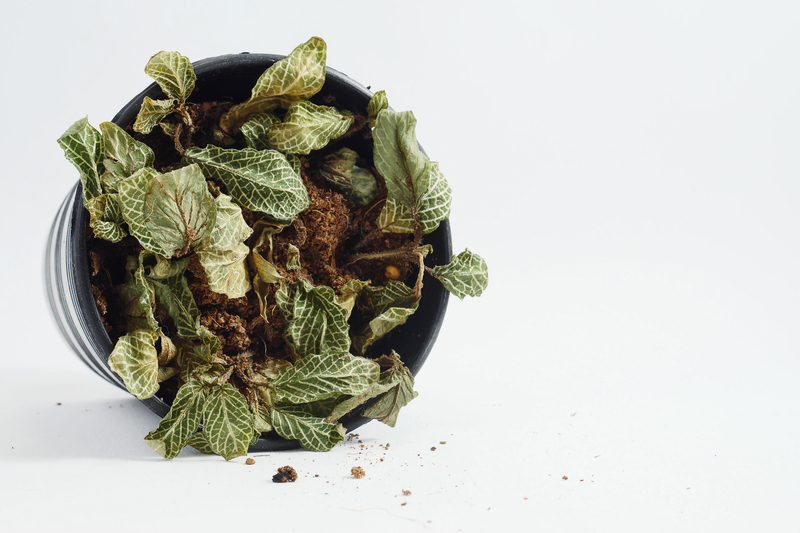Tail-Wagging Tips for a Pet-Friendly Garden
Posted on 05/09/2025
Tail-Wagging Tips for a Pet-Friendly Garden
Dreaming of a beautiful outdoor haven you and your furry friends can enjoy together? A pet-friendly garden doesn't just enhance your home's charm--it offers a safe, engaging place for pets to play, relax, and explore. Whether you're a dog lover, a cat enthusiast, or a fan of smaller critters, crafting a garden with their needs in mind will keep every tail wagging and every whisker twitching. Keep reading to discover how to create an irresistible, tail-wag-worthy outdoor space that both you and your pets will love.
Why Build a Pet-Friendly Garden?
Designing a pet-friendly garden offers multiple benefits for pets and owners alike. Not only does it keep your furry companions happy and healthy, but it also gives you peace of mind knowing your garden is safe from dangers like toxic plants or hidden hazards.
- Physical exercise: A safe, enclosed space allows pets to run, jump, and play freely, maintaining their physical health.
- Mental stimulation: A diverse garden environment engages their senses and reduces boredom.
- Pet safety: Pet-proof features minimize risks from toxic plants, sharp objects, or hazardous chemicals.
- Family bonding: Spending quality time outdoors fosters a stronger bond between you and your pets.
Fun Fact:
Studies show pets with access to stimulating outdoor environments display fewer behavioral issues and enjoy improved overall well-being!

Key Elements for a Pet-Friendly Garden
Creating the perfect pet-safe outdoor space involves a blend of thoughtful planning, plant choices, and clever design. Here's how you can make your garden a paradise for pets:
1. Choose Pet-Safe Plants
The heart of a pet-friendly garden starts with the right plant selection. Many common garden plants are toxic to animals, so always check before planting.
- Safe options: Sunflowers, marigolds, snapdragons, rosemary, and wheatgrass are pet-friendly and vibrant.
- Avoid toxic dangers: Lilies (especially to cats), daffodils, foxgloves, azaleas, and sago palms can be harmful or even fatal if ingested.
Pro Tip: If unsure, consult your vet or check the ASPCA's list of toxic and non-toxic plants before adding anything new to your garden.
2. Secure Your Space
One of the top priorities for a pet-friendly garden is effective boundaries. Curious noses and energetic paws can lead to adventurous escapes or unintentional mischief.
- Fences: Install sturdy, tall fences (at least 6 feet for dogs and higher for agile pets). Make sure there are no gaps underneath or between panels.
- Gates: Use self-closing gates with secure latches to prevent accidental escapes.
- Barriers: For smaller pets like rabbits, use mesh or buried wire to thwart digging under fences.
Regularly inspect all boundaries for weak spots and repair them promptly to maintain a safe, pet-proof perimeter.
3. Ditch Chemicals--Go Organic!
Pet-friendly gardening means minimizing the use of harmful chemicals. Pesticides, herbicides, and fertilizers can be toxic to animals if licked or eaten.
- Choose organic: Natural compost, mulch, and pest-repellent plants protect pets and boost soil health.
- Safe weed control: Hand-pulling weeds or using vinegar solutions instead of chemical sprays.
- Responsible storage: If you must use garden chemicals, always store them in sealed containers, far out of pets' reach.
Pet safety tip: Let treated areas dry completely and keep curious paws away after any garden work involving chemicals.
4. Provide Plenty of Shade & Shelter
Just like people, pets can suffer from heatstroke or sunburn on hot days. Make sure your garden offers shady oases and shelter for all seasons.
- Natural shade: Trees, large shrubs, and vining plants over pergolas or trellises provide cool retreats.
- Artificial shelters: Canopies, dog houses, or pop-up tents can shield from sun and rain.
- Cooling features: Small water features like fountains also help reduce the temperature and attract curious pets.
5. Offer Fresh Water and Mud-Free Surfaces
Hydration is vital for happy pets, especially during playtime. Keep clean water readily available throughout your pet-friendly outdoor area.
- Water bowls: Place several bowls in shady spots. Change the water frequently to keep it fresh.
- Pet fountains: These encourage pets to drink more and add a playful touch.
- Mud-free paths: Use gravel, pavers, or bark chippings to create designated routes, helping keep muddy paws at bay.
6. Encourage Exploration with Fun Features
Pets love a dynamic and engaging environment. Incorporate features that stimulate their senses and satisfy natural instincts.
- Paths and trails: Winding walkways offer adventure for pets who love to roam.
- Dig pits: Dogs especially love digging--give them an approved spot filled with soft sand or soil.
- Climbing structures: Cats, rabbits, and even small dogs enjoy platforms, ramps, or low branches for climbing and lounging.
- Scent gardens: Plant edible herbs and fragrant flowers that invite sniffing and nibbling.
Tip: Rotate toys and add new obstacles to keep the garden novel and exciting for your furry friends.
Common Hazards: What to Watch Out For
Your best friend's curiosity can sometimes lead to trouble. Stay vigilant for these common garden hazards:
- Toxic mulches: Cocoa mulch, for instance, is dangerous to dogs. Choose pine, cedar, or untreated bark instead.
- Sharp tools: Store garden tools securely out of reach when not in use.
- Pools and ponds: Supervise pets near water features, particularly if they can't swim. Consider shallow, gradual edges or fencing where necessary.
- Compost heaps: Some decomposing foods (like grapes, onions, or avocados) are toxic; use pet-proof bins or fence off compost areas.
- Garden waste: Avoid leaving out trimmings from poisonous plants, as pets may chew them.
Regular inspections and seasonal maintenance will keep your garden safe for adventurous pets all year long.
Smart Planting: Flowers, Shrubs, and Grasses
Ready to add lush beauty to your pet-safe garden? With mindful choices, you can enjoy vibrant color while keeping pets protected.
Top Pet-Friendly Plants:
- Sunflowers: Tall, cheerful, and non-toxic to most pets.
- Calendula (Pot Marigold): Edible for humans and animals--great for curious nibblers.
- Rosemary & thyme: Safe for dogs and cats; their scent deters bugs naturally.
- Catnip & cat grass: Especially suitable for feline friends, providing enrichment and safe grazing.
- Fescue grasses: Soft underpaw, resilient, and non-toxic.
Plants to Avoid:
- Lilies (extremely toxic to cats)
- Sago palm
- Daffodils
- Oleander
- Foxglove
Creating Variety
Mix pet-friendly flowers, shrubs, herbs, and grasses for a vibrant, safe landscape. Arrange taller plants or hedges for privacy and shelter, while low-growing, soft plants can edge borders and walkways. For added fun, create themed beds--herb patches for digging dogs or catnip corners for feline royalty!
DIY Projects for a Pet-Friendly Backyard
Want to upgrade your garden's pet appeal? Try these simple, affordable DIY ideas:
- Build a digging pit: Mark out a sandy area, bury a few toys, and reward your dog for using it.
- Create a catio: Homemade outdoor enclosures give cats a secure taste of the wild.
- Construct shady dens: Upcycle old pallets, plastic barrels, or use garden furniture as the base for pet huts.
- Install a dog-friendly water fountain: Motion-activated or solar fountains make hydrating fun.
- Make a sensory path: Use different textures like grass, mulch, and stone to intrigue curious paws.
Involving the family in these projects ensures everyone learns how to maintain a safe and stimulating environment for your special companions!

Maintaining a Pet-Safe Garden Year-Round
A truly pet-friendly garden is sustainable and safe through every season. Follow these year-round care tips:
- Inspect fences and gates for escape routes after storms or repairs.
- Remove fallen leaves and branches (especially if from toxic trees).
- Store bulbs, fertilizers, and garden chemicals securely over winter.
- Mow lawns regularly to deter ticks and fleas.
- Keep water clean and unfrozen in cold months.
Regularly check your outdoor space allows both pets and plants to thrive in harmony, whatever the weather.
Final Thoughts: A Garden Where Tails Wag and Paws Play
Creating a pet-friendly garden brimming with safe plants, clever features, and fun activities enhances both your lifestyle and your pet's happiness. With these tail-wagging tips, you'll build a backyard haven that encourages exploration, exercise, and bonding--while dramatically reducing risks and headaches.
Remember: The best gardens for pets combine safety with stimulation, comfort, and creativity. Whether you're landscaping a sprawling yard or transforming a petite patio, your efforts will reward you with happy pets, thriving plants, and countless shared moments of joy.
Share the Love!
If you found these pet garden tips helpful, share them with fellow animal lovers or bookmark for future garden inspiration. Here's to wagging tails, purring companions, and a garden you can all grow together!

